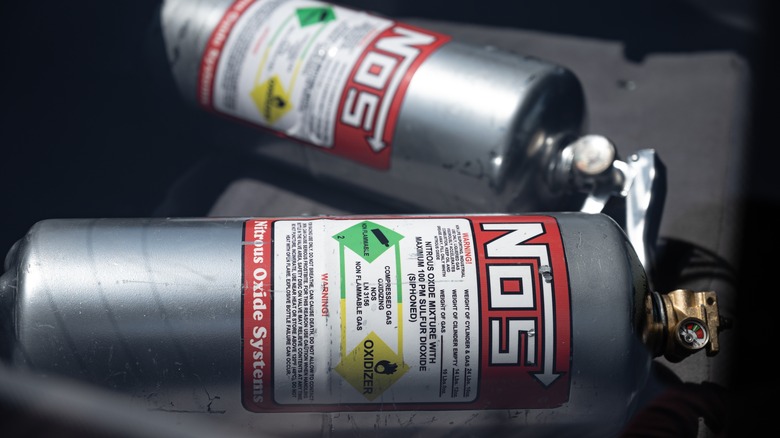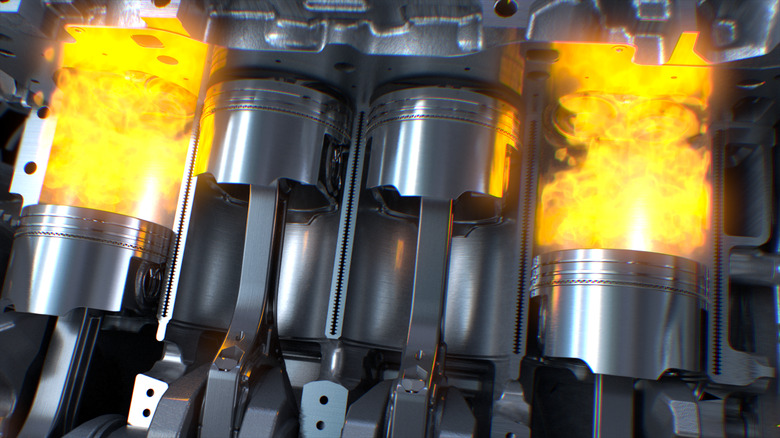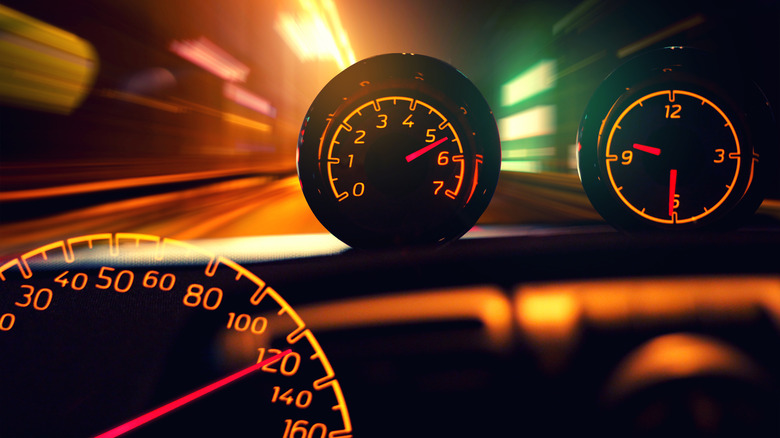4 Things To Know Before Installing Nitrous In Your Vehicle
Without experience in vehicle performance modifications, nitrous might be most familiar to you through blockbuster movies series like "Fast & Furious." If you recall, the characters had buttons incorporated into their steering wheels that activated NOS, or nitrous oxide systems, to help give them an edge during racing. In fact, the nitrous oxide automotive market is rapidly rising and expected to reach upwards of 2.51 Billion in total revenue by 2032. But how does it work in real life, and what should you know before adding it to your car?
Nitrous oxide is not a new discovery and dates back to 1772. It's been used for a few applications, such as a painkiller (particularly in dentistry) and an engine additive that enhances performance. Nitrous oxide or laughing gas also offers some people rapid relief from chronic depression. How does nitrous add performance to an engine, you might ask? When adding nitrous oxide to your engine, the molecules break down and add oxygen to the combustion mix. More oxygen helps utilize more fuel and increases pressure inside the engine, forcing the creation of additional power.
But before you decide to equip your ride with nitrous, there are a few things to think about first. Can your engine handle the additional pressure nitrous will place on it? Is it even legal in your State? Should you use wet or dry injection systems? The nitrous tanks are also sensitive to ambient temperature, so what measures can you take to ensure safety and performance?
Nitrous oxide: Will your engine boost or bust?
The safety of your engine depends on its size and the amount of nitrous oxide used. As you might imagine, a larger cubic-inch V8 will likely be more accommodating to additional performance on demand than a smaller engine. But that doesn't mean you can't add it to a four- or six-cylinder engine as long as you don't overdo it. Generally, nitrous is safe for most cars if installed and used properly.
Nitrous comes in measured shots of horsepower that can start as little as 25, and the key is to start small, especially if you are running a stock engine that doesn't have beefed-up aftermarket seals or components designed to handle additional pressure. Many aftermarket performance manufacturers agree that using a 60-horsepower shot or lower is safe if your engine is 100% factory. Also, excessive use of nitrous can negatively affect your engine, so use it sparingly. If you own one of the most popular cars for street racing, you won't need to rest your hopes solely on a nitrous shot for victory.
Is nitrous illegal in your state?
Nitrous oxide blurs the lines a bit in terms of legality, and every state has its own laws, requiring a bit of research on your part. On the one hand, it's not considered a restricted substance you need special permission to use. You can walk into any store that offers it and get a fill-up right out in the open. So, getting it isn't a problem, but once it's installed in your car, your state might have something to say about it.
If you're unsure whether you can legally equip nitrous in your car and travel public roads, restrict your use to either a specified track or privately owned property. Whether you stop by your local race track or run on a homemade circuit, it's perfectly within the confines of the law in every state. If you do plan to enter officiated track competitions, be cautious you don't add enhancements that'll disqualify your car, like the tech on the $300,000 Mustang GTD that's illegal in racing.
Looking at a specific example, Maryland identifies nitrous as a power booster system and prohibits its use on highways, except in certain scenarios. These scenarios include a vehicle on its way to or from the track or if the tank has been removed from the vehicle. Maryland law also stipulates that each power-boosted car needs an identifying sticker to mark it as such.
Nitrous delivery systems: dry or wet injection?
If you want to add a quick punch of performance power to your vehicle with nitrous, you'll need to decide which type to use. A wet nitrous system introduces nitrous oxide and fuel at the engine's throttle body. In contrast, a dry system separates nitrous oxide and fuel until they mix via the fuel injectors. Both systems offer that boost of horsepower you need to pull ahead of the competition, but which one is right for you?
Wet injection features the advantage of being easier to dial in and is a better choice for those looking to add more substantial levels of performance. Unfortunately, wet injection systems are also more complicated to integrate into your car and pose risks such as creating a mixture that fails to atomize properly or fuel that fails to reach all the cylinders. If a cylinder isn't getting enough fuel, it can become damaged, and if it gets too much, it also creates problems.
Dry injection systems are much more straightforward in terms of installation since the fuel doesn't mix before the fuel injectors and offer a more even mixture across the cylinders. However, a dry delivery system can't be adjusted easily without an experienced mechanic who can fine-tune components like the fuel injectors themselves. You'll need specialized tuning software to set the ideal mixture, but not every engine can accommodate a dry injection system.
Too hot or too cold: nitrous is picky about temperature
If you decide to get a nitrous oxide system installed in your vehicle, there is one accessory you might consider purchasing. Nitrous tanks work best in temperatures between 85 and 90 degrees Fahrenheit, so they won't achieve optimum results if they're colder. One way you can ensure the tank isn't too cold is to buy a bottle heater. Depending on your bottle size, you can purchase a bottle heater kit for between $300 and $400.
Another issue with nitrous tanks is excessive heat, which can manifest from something as simple as the tank getting too warm while sitting in a hot car during the summer. Fortunately, there are safety systems that will automatically alleviate the building pressure inside the tank to prevent an explosion. However, while lowering the tank pressure in a hot environment stops a tank rupture, it also vents out all your nitrous.




